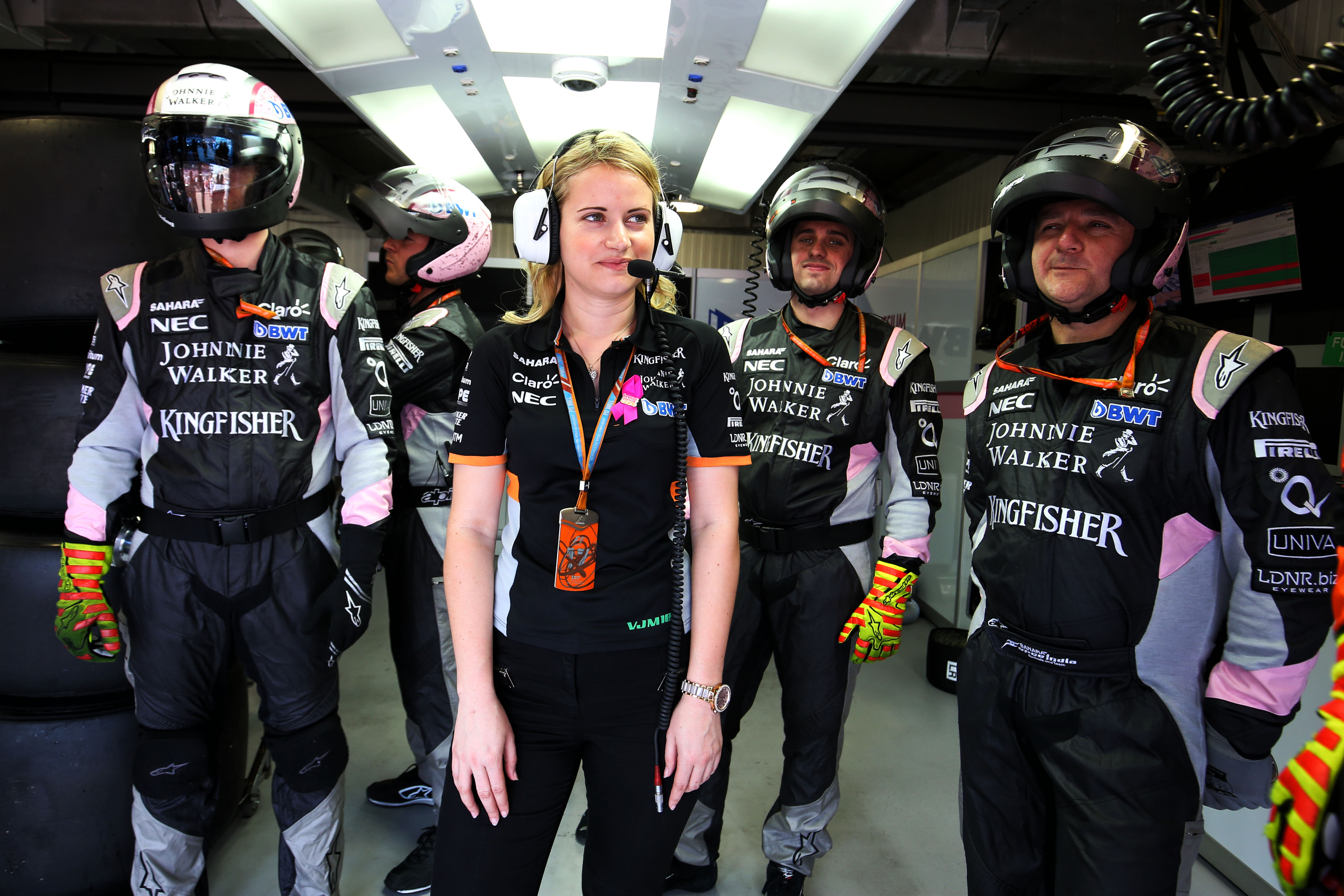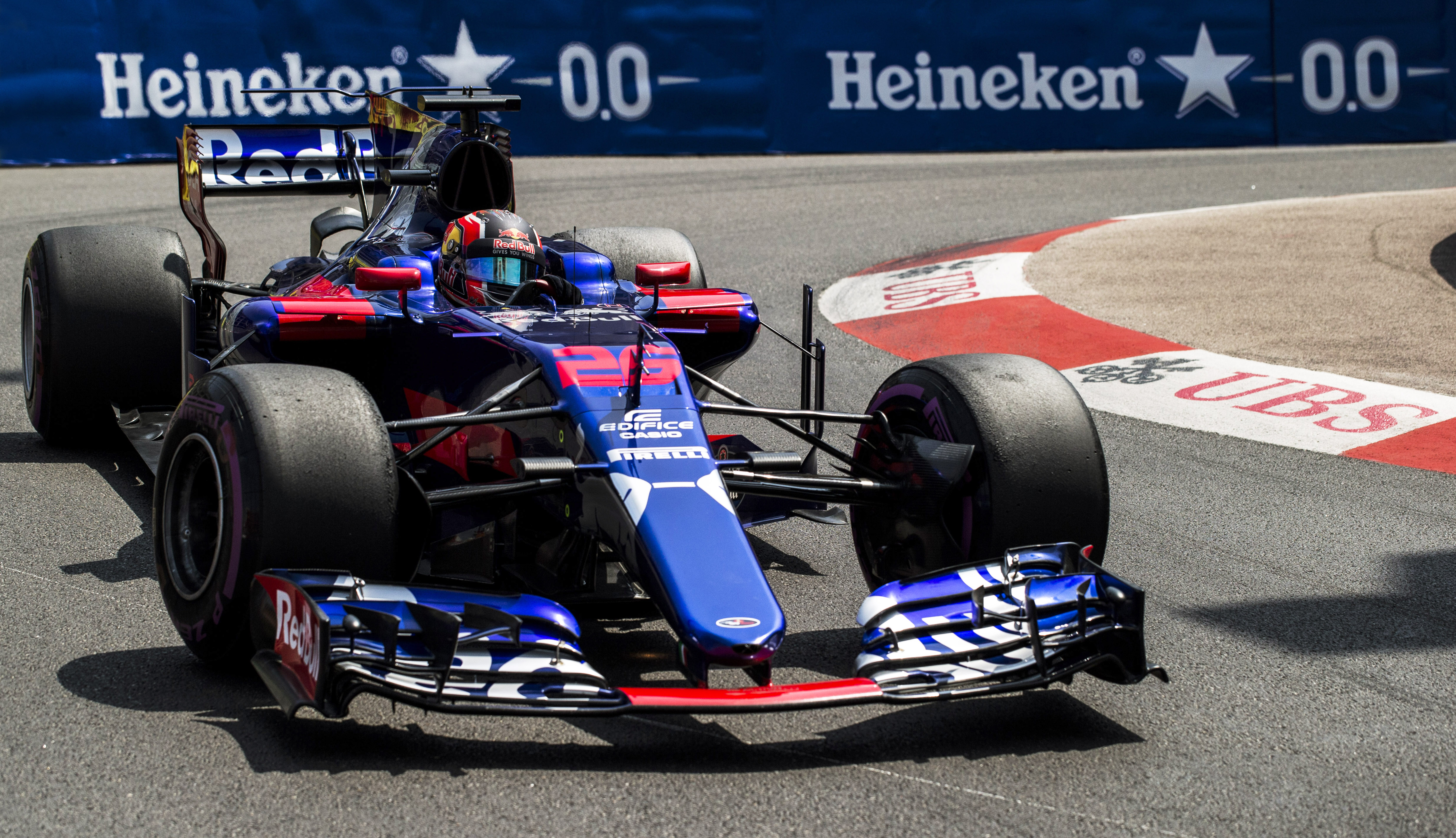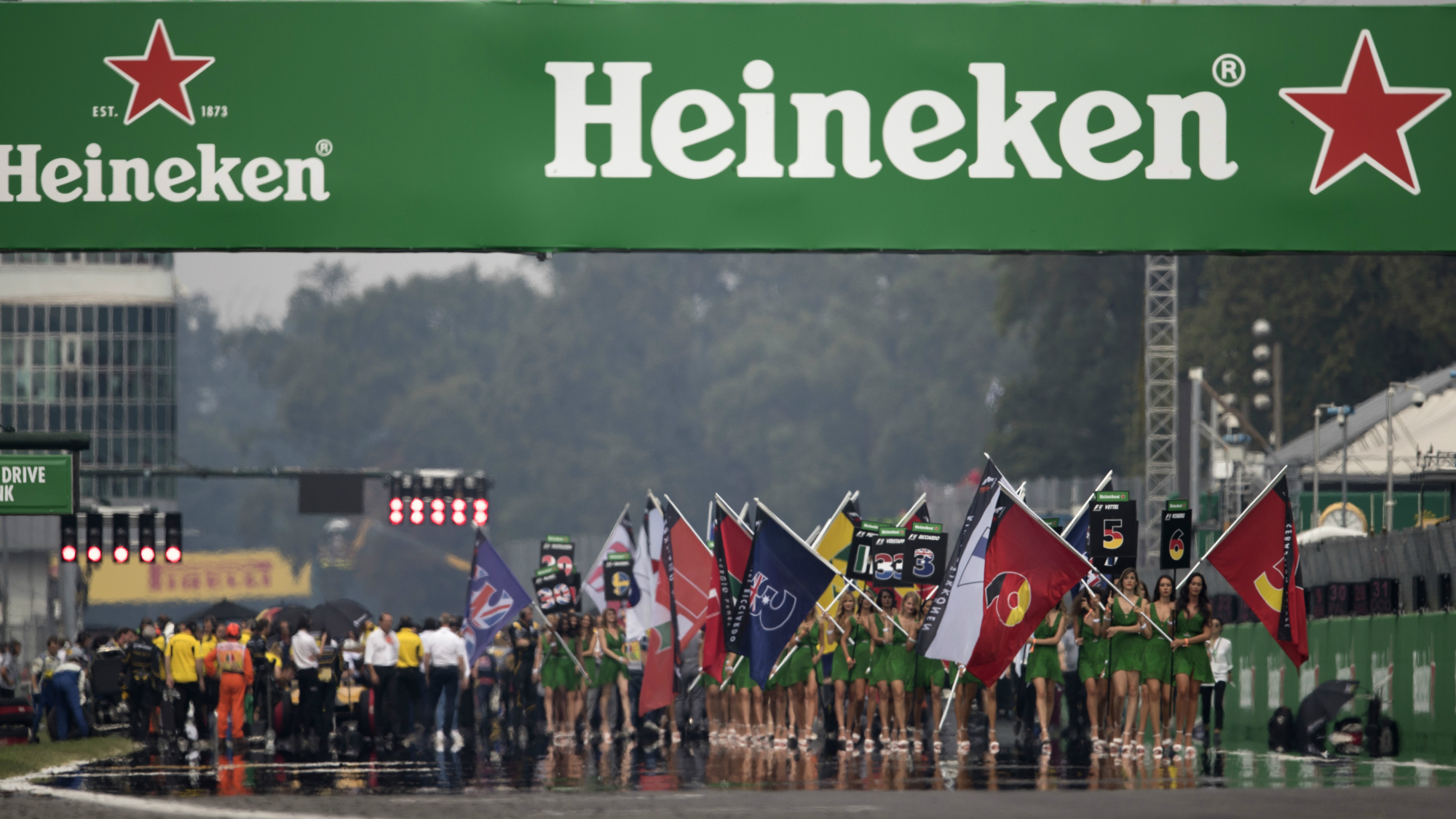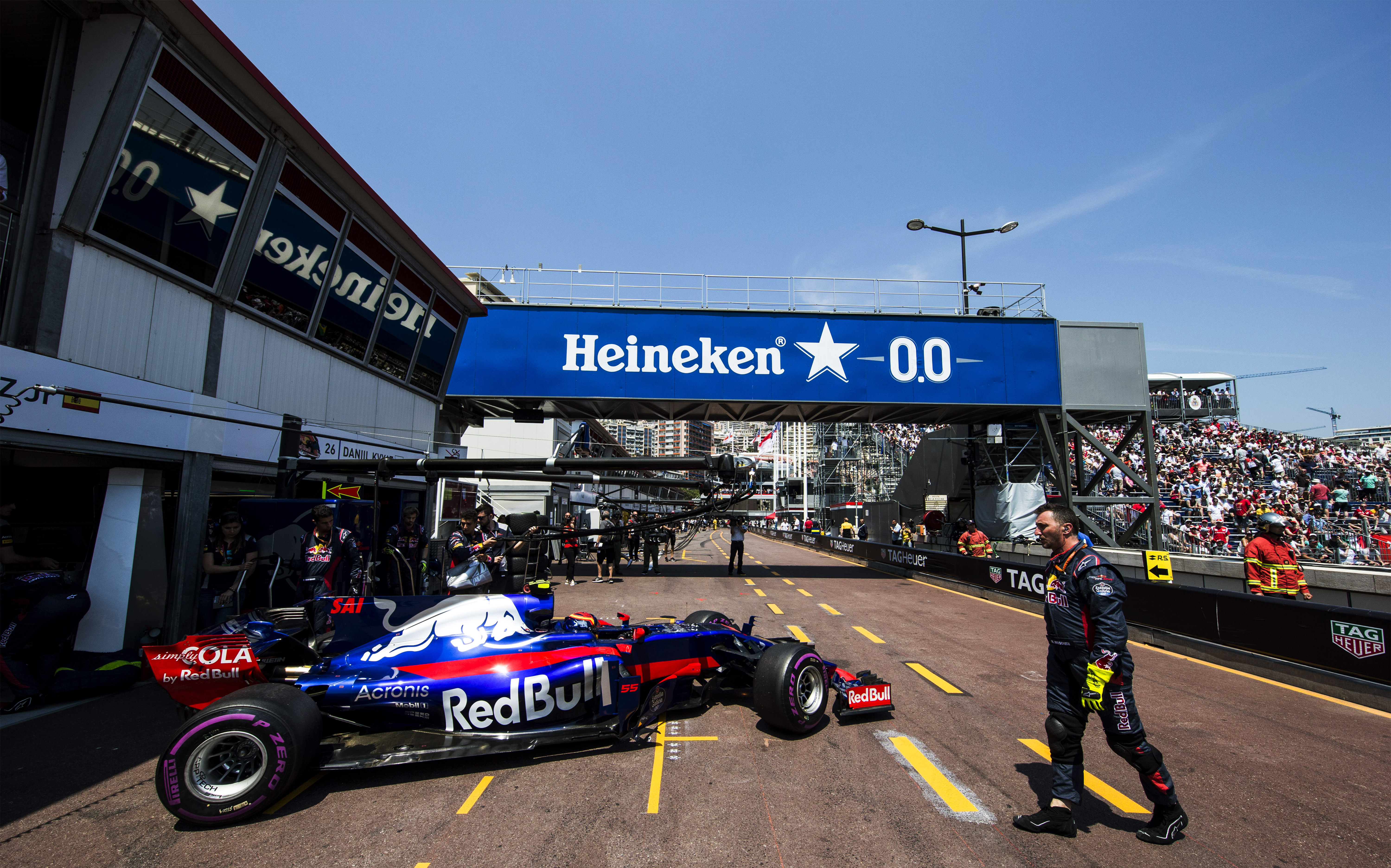Meet the inspirational women proving that F1 is ‘more than a man’s world’
Who are the women in Formula One and how have they got to where they are?


Who are the women in Formula One and how have they got to where they are?
With the Grand Prix season coming to an end, of which Heineken is global sponsor, we sat down with some of the leading women in F1 to find out what it takes to survive in a male-dominated industry, and better yet, run it.
While they may not be racing, these two women and many more are the backbone of Formula One, proving that it’s so much more than a man’s world.
We spoke to Bernadette Collins, a Senior Strategy Engineer for Force India, and Jennifer Plückhahn, a Shell F1 Fuels Coordinator, to talk men to women ratios and the biggest misconception about women in sport. Prepare to get inspired…

Monaco Grand Prix
Bernadette Collins Force India Strategist
What does being a Strategist entail?
‘As senior strategy engineer I'm responsible for the planning, execution and analysis of race strategy over each event in order to secure the maximum points possible for the team. I work with two car specific strategists to help select a race plan and pitstops in continuously changing conditions to achieve the best results.’
How did you get into what you do?
Celebrity news, beauty, fashion advice, and fascinating features, delivered straight to your inbox!
‘I have tried very hard at all stages of my education to get involved in work experience opportunities and get a feel for the area of the industry that suits me best and aspects I enjoy the most. Even since I have begun in Formula 1 I have gained experience in many areas and I think that is very beneficial for my job. Lots of opportunities exist and are very beneficial to get experience. Time trackside in other formula or Formula Student type events is very valuable. Hard work and determination goes a long way.’
What is your role during the race?
‘During the race I work with the strategy and race engineering teams to choose stop laps and strategies that bring the best results. This very rarely follows the pre-set plan but involves quick reactions to the strategy decisions that others take as well as incidents, safety cars and weather conditions. The situation is reviewed continuously and always watching for opportunities ahead or risks behind.’

How closely do you work with the driver?
‘My main interactions with the drivers are on Saturday night and Sunday morning after qualifying and before the race. This normally involves reviewing the race plan and how we believe the race will pan out. It's important that the driver understands when will be the most important points of the race and key points to provide feedback and so on. It’s very important that the driver supports the strategy that we try to implement on Sunday.’
What is the ratio of men to women in your field?
‘In mechanical engineering in general very poor and within the entire team and most teams the ratio is not good. However in strategy there are at least 3 women who regularly sit on the pit wall across the 10 teams so that ratio is actually relatively strong but still nowhere near 50/50. It’s been the same since I completed my engineering degree so not surprising but it is improving year on year and I do see improvement and more focus on getting young women interested in engineering which is very important.’
How have you found being a woman in what is considered a man’s world?
‘I haven't noticed it too much to be honest. I obviously stand out more on our pit wall than my male piers on other pit walls so from that side I see myself on TV more than others. However, within the team I feel I'm treated as the male equivalent in my role would be and my ideas and suggestions are received just as well.’

How do people react to your job?
‘The majority of people I speak to are very surprised that I work in Formula 1 as it’s seen as a man's sport, but most are impressed. Too many people expect that an engineer should wear overalls so the image of engineering has a long way to go. I think maybe more men than women dream of being part of the perceived Formula 1 lifestyle of glamour. Most are surprised to hear the reality of long hours at the track and early starts rather than boat parties in Monaco.’
What is the biggest misconception about women in sport?
‘It's difficult because again I think the misconception is with engineering in general. Most people are surprised that I do my role. Many don't really think of the variety of roles and jobs that exist within Formula 1 and only really have thought of the drivers and mechanics doing pitstops and the rest of the team more forgotten about. I think the days of anyone believing that a woman cannot do a job as well as a man are thankfully gone and I've never came across that opinion. I have been asked in the past for tea or coffee when making my own in catering and that has not gone down the best.’
What skills are essential for your job?
‘There are a few very essential skills. Communication being the main one as decisions need to be given quickly and clearly, it’s also important to understand the information that you are receiving easily. I have 20 intercom channels on my pit wall so it can get busy! Decision making and problem solving are also key to live decisions throughout sessions on the pit wall. Plus mathematics and statistics are also needed in the preparation and live race adjustments.’

What qualifications do you need for your job?
‘I have an engineering degree but others in my career may have a mathematics or statistics degree.’
What is the hardest part of your job?
‘One of the hardest parts of my job is trying to justify a decision that was made at the time but later shown to be incorrect. This is one of the few jobs where it is very easy to see after the event what the correct decision should have been. It’s also really difficult when one car has done well and the other hasn’t, due to a decision that has been made on the pit wall.’
What has been the highlight of your career?
‘The highlight of my career was my first podium with Sahara Force India in Russia. We took a big risk and spent the vast majority of the race looking like it would pay off before losing the position two laps from the end and retaking it on the final lap. I think the rollercoaster of emotion definitely made the result feel special. Similarly, Brazil in 2016 - in the rain the correct decisions were made with the two cars and the team pretty much secured 4th position in the constructors, our highest ever finishing position. It didn’t look like an amazing result to the outside but it felt like we'd won the race.’

Jennifer Plückhahn Shell F1 Fuels Coordinator
What does being a Shell F1 fuels coordinator entail?
‘When I am not at a race, I am working at the Shell Technology Center in Hamburg where I am responsible for coordinating all laboratory activities related to Formula 1 and Shell’s other motorsport activities like the World Endurance Championship and MotoGP. I also organize the laboratory test work for the fuels we develop, working together with my colleagues to ensure a continuous workflow and I manage the quality and processing of data as well as the formal reporting of results and discussions with the fuels scientists.’
How did you get into your career?
‘I joined Shell as an apprentice in 2010, working on fuels research, analysis and testing before the opportunity to join the Shell Trackside Team came up. I am a huge Formula 1 and MotoGP fan and I jumped at the chance and came on board in 2016 as the only girl on the team.’
What is your role during the race?
‘On site during Grand Prix weekends, I sample and test the fuels and lubricants which come straight from Sebastian and Kimi’s cars to ensure they are legal and healthy and then report the results to Scuderia Ferrari engineers. Moreover, we give tours to Shell customers through our track lab over the whole weekend. This gives our customers the opportunity to witness the support that we give to the Scuderia by providing the best race fuels and lubricants and understand where plenty of the innovations that go into Shell products come from.’
How closely do you work with the driver?
‘We regularly see Kimi and Seb while collecting the engine oil and fuel samples from the Scuderia Ferrari mechanics in the garage and the drivers do come to the lab on a regular basis for technical interviews or photoshoots. I also had the opportunity to host an event with Sebastien Vettel for fans in Germany last year and that was a once-in-a-lifetime experience!’
What is the ratio of men to women in your field?
‘In my field in general, (lab technicians), there tends to be more women than men, in the ratio of 60/40. At the race and within the world of F1, I would estimate perhaps 10% of those on the technical side are women. We at Shell are actually supporting an initiative (called Dare to be Different) to encourage young girls to consider careers in motorsport.‘

How have you found being a woman in what is considered a man’s world?
‘In my opinion, it doesn’t matter as long as everyone has the same vision and loves doing their job. To be honest, in some situations I prefer working with men as it can be more relaxed! You never really think about being the only girl at all, you just get on with it!’
Do you come across sexism in your job?
‘There is no doubt that Formula 1 can sometimes be a macho world, but I can certainly hold my own and have never come across any overt sexism on the job I would say. Within my team at Shell, it doesn’t make a difference whether I am male or female – it is about doing the job well and with passion!’
How do women react to your job?
‘This is hard to say, because most of the women I know do not watch Formula 1 or don’t really understand it. Women I know tend to be more interested in the lifestyle and the travel the job brings with it, they don’t really want to know about the technical background, but I always try to change that attitude. They are often amazed to learn for example that I am developing the fuel of the future for their cars through my work in F1!’
How do men react to your job?
‘Especially outside of the sport, the first question I’m often asked by men who find out I’m working in Formula 1 is “Are you a grid girl?”. Of course, I proudly tell them that I am responsible for delivering and testing Shell V-Power fuel and Shell Helix lubricant which is powering Ferrari to their incredible wins this season!’

What is the biggest misconception about women in sport?
‘Perhaps that women are more suited to the marketing, media or hospitality side of a sport like F1. This is not the case. I am proving that women can and should be leading the way on the technical side of the sport!’
What skills are essential for your job?
‘Of course, it is helpful to have a chemical or technical background, and most importantly you need to be able to cope with stressful situations under high pressure. It is also good to be in good shape and healthy to deal with the long working hours.’
What qualifications do you need for your job?
‘You need to have an understanding of what we are doing at the races. That’s not just running fuel samples on the Gas Chromatograph (an instrument we use to separate and analyse the fuel into its individual components, to provide us with a digital fingerprint of the makeup of the fuel) as well as the engine oil samples on the Q100 (also known as the Rotating disc electrode, which we use to test engine oil samples for up to 15 elements, to help check the health of the engine) but we also prepare and trouble-shoot the instruments themselves. The most important part is to interpret the results the instruments give us, to provide Scuderia Ferrari with the best support to be successful, which is working very well this season.’
What is the hardest part of your job?
‘You certainly have to be very organized and really have to live for the job when on site. The working hours are very long, which makes it harder to stay fit and healthy. You would never survive if you don’t have a passion for what you are doing, because you are travelling a lot, which also means less time with your family.’
What has been the highlight of your career?
‘My personal highlight is getting this trackside team job that combines the best of both worlds: development work in Hamburg with the exciting trackside job at races.’
What advice would you have for women hoping to go into your field?
‘You need a passion for motorsport to deal with the lifestyle, the different countries and time zones and long working hours. You need to be aware that speaking in front of media, photo shoots, interviews and track lab tours are also a big part of the job. Overall I would say to have confidence in yourself and your abilities to do what you want to do.’
Heineken's 'More Than a Race’ campaign centres on the fact that Formula One is not just a 2-hour race but a 72-hour spectacle of glamour and excitement, taking place in some of the world’s greatest cities. Heineken will bring to life the ‘More Than a Race’ campaign in a relevant and compelling way throughout the 2017 season – with the aim to bring Formula One to a wider audience. Heineken wants to dispel all myths around the sport and show that Formula One is a diverse sport with a number of women in traditionally male dominated and influential roles.

Jenny Proudfoot is an award-winning journalist, specialising in lifestyle, culture, entertainment, international development and politics. After working at Marie Claire UK for seven years - rising from intern to Features Editor - she is now a freelance contributor to the News and Features section.
In 2021, Jenny was named as a winner on the PPA's '30 under 30' list, and was also listed as a rising star in journalism.